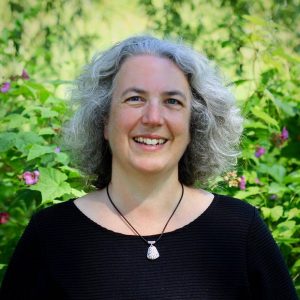Would you like to take a crack at solving climate change? Or at least creating a road map of how we could do it?
That’s possible now thanks to a new computer modeling tool called En-ROADS.
Created by the nonprofit think tank Climate Interactive and MIT’s Sloan’s Sustainability Initiative, the scientifically rigorous online tool lets you put your hand on the lever to figure out what mix of energy, economic and technological changes can get us to a livable future.
For example, what if we stop burning coal now and move to clean energy in the next 10 years? What if we curb deforestation? Or demand increased energy efficiency and the electrification of our vehicles? Put a tax on carbon? There are too many variables to wrap our heads around. That’s where computer modeling comes in: It can help us visualize the possibilities.
“We use computers to keep track of all of the feedback loops and interconnections and tipping points that exist either in the atmospheric or biological or economic or political parts of the system,” says Climate Interactive cofounder Elizabeth Sawin.
These kinds of high-level tools are usually reserved for scientists and other experts, but En-ROADS is available to everyone. Launched in 2019, it’s already been used by government officials, business leaders and educators, and local activists in dozens of countries. It helps people visualize that climate solutions are in reach, says Sawin.
Climate Interactive’s work extends beyond computer modeling. We talked to Sawin about the potential of En-ROADS to change communities and the organization’s practice of “multisolving” — employing collaborative solutions that work for climate change, health, equity and well-being — and how improving the social safety net can also help address the climate crisis.
En-ROADS Overview from Climate Interactive on Vimeo.
When you build a tool like En-ROADS, who are you hoping uses it?
The tools that we build are used by quite a range of people, which is one of the exciting things about them.
Before En-ROADS we had a tool called C-ROADS, which was used in the context of the United Nations Framework Convention on Climate Change. During the negotiations in Copenhagen it allowed people to add up what each country was offering to do in terms of emissions cuts and calculate what that would mean for the global temperature at the end of the century. That was of interest to the U.S. State Department under President Obama and negotiating parties from other countries.
As a young bunch of scientists, it was fairly thrilling to hand our results to a colleague who took them to [science advisor] John Holdren, who took them to the president.
Today we find En-ROADS having quite a lot of traction in the upper levels of companies and governments, but one thing we’ve learned over the years is that those high-level leaders really can’t move further or faster than the civil society is ready to.
So we invest quite a lot in supporting teachers — university and high school — and advocates. We’re in the middle of a second round of webinars training around 1,000 people to use En-ROADS so they can teach others.
These are people all around the world. One is interested in going to her members of Congress with her laptop and using the simulation to advocate for a better future for her kids.
What does En-ROADS do differently from other computer simulations?
One thing we talk about is the democratization of this information. En-ROADS isn’t breaking new scientific ground that other computer simulations of climate change don’t do. In fact, often we’re relying on that cutting-edge research of other groups.
But we have paid attention to making it run fast and making it freely available online, where most of these other tools aren’t designed for those purposes. They’re doing scientific research for other scientists. Top leaders can often get the input of those academics if they have a question or a scenario, but it’s unlikely that a politically active mom who’s trying to influence her member of Congress would have access to those kinds of tools. Whereas if she puts in the time to learn, she can use En-ROADS.
I think more and more, and especially in the last few years, we come across people who have the impression that [the climate crisis is] pretty much hopeless. “It’s too late. We’ve left it too long.” And En-ROADS, for those people, is motivating because it shows that the goal of the Paris Climate Agreement to keep temperature increase well below 2 degrees [Celsius] is still physically possible. There’s a huge amount of social and political will needed to do it, but it’s within reach.
Your organization is guided by a practice you call “multisolving.” What is that?

In the early years of working with models like C-ROADS and En-ROADS, we were really focused on tons of greenhouse gases and how to limit those. And clearly that’s the core of the problem. But what we found in Copenhagen was that, despite our group and a few others who were doing this analysis actually being heard, and being on the front page of top newspapers, it didn’t lead to more ambitious pledges from countries.
There was a soul-searching moment for me and for Climate Interactive in realizing that just being good scientists within this narrow bound of counting tons of carbon isn’t getting us onto the path we need to be on.
That got me interested in this question of what else would be different in a world that has gotten off of fossil fuels. This was around 2009-2010. I hired the best researcher I knew, and she went away and came back and handed me this report.
It said that the benefits of being off fossil fuels, when monetized — when you took all the lives saved, all the healthcare costs saved, all the jobs created — the savings were of the same order of magnitude as the cost.
I thought she had made a mistake. Because I had worked my whole career trying to convince people that it’s going to be hard, it’s going to be expensive, but we need to get off fossil fuels. And she was saying that if you just widened your scope and looked not just on the carbon side, but you looked at the lives and health and community well-being, we were going to reap all these benefits.
I felt like I had been spending my life on a problem that was framed in a way where we would never be able to solve it. But by expanding our view, the things we were missing — basically political will, political power and budgetary power — seemed like maybe they could be aligned.
After that, for a long time we talked about the “co-benefits,” and that that was kind of the word at the time. And many people still use it. We ended up dissatisfied with that word because it sounds like climate change is the main benefit, and then there are these other nice co-benefits.
That’s still putting CO2 at the center of the world.
To a parent who’s been in the emergency room all night with a child with asthma, is protecting the climate 100 years from now the main benefit of closing the neighborhood coal-fired power plant? Or is ending asthma the main benefit and climate is a nice co-benefit?
So we made up the word “multisolving” to talk about how all these problems matter.
What does this look like in action?
We learned that by and large our systems are not set up to allow people to take advantage of these synergies. And just to give you one example, if a country is going to go on a low-carbon transportation plan, those are going to be costs that are felt by the ministry of transportation. But the savings are largely going to be felt by the ministry of health. There’ll be less hospitalization, fewer premature deaths, less cardiovascular and respiratory illness, less premature birth. But the way current governments are set up, no transportation minister is going to get much political appreciation or an incentive by saving money for the health ministry.
So for the last few years we’ve been working more and more on how to bring people together, to build the relationships that are needed to take advantage of these synergies because — until people can shift their systems around in a way where they can act together across these different silos and boundaries and jurisdictions — this will all just stay theoretical.
One place we have been doing this is in Atlanta with a group called Partnership for Southern Equity. We’re creating a community network, the Just Growth Circle, that can be mobilized to have influence, decision-by-decision, on the kind of pattern of growth and development that will eventually change a whole city.
That kind of deep-relationship building isn’t something that can be done quickly. How do you balance that kind of work to establish these interconnections with the urgency of the climate crisis?
Wendell Berry said, “To be patient in an emergency is a terrible trial.” But we’re in the kind of emergency that calls for patience. Time is very short and yet to make the kind of changes we need to make requires trust and relationships that can’t be rushed and can only be cultivated. All you can do is create the conditions for them.
If you have urgency — if you need to bring things to scale, if you’re looking for transformation and not incremental change — then actually this very slow and patient work of building trust and relationships is the way that you get to a very fast and transformative change.
Has anything shifted in your thinking in the last few months during this global pandemic?
There’s been a lot of talk about opportunities for transformation within the pandemic, especially about the need for low-carbon solutions. The other side is the social safety net. A lot of what we need to do to help people through the pandemic is also what the smart people behind the Green New Deal have said from the beginning needs to be part of the plan.
When they talked about universal healthcare, childcare, gender equity programs and the job training side of it, lots of people responded that they were way outside their lane. “What does this have to do with carbon?” But the pandemic is showing us that if you want a society to be able to pivot rapidly, you need a social safety net to support people.
If you want to pivot to green infrastructure, if you want low carbon infrastructure, you’re changing a whole workforce in a generation. The social safety net is the lubrication that allows that to happen with less friction.
The social safety net we need to build to get through the pandemic could be built to also carry us through the transition to a climate-safe economy. It’s not the technical side of this transition, but it is the taking care of each other through the transition. That may sound selfless, but it’s also highly practical because the transition isn’t going to happen if we can’t move a whole society very quickly.
![]()


